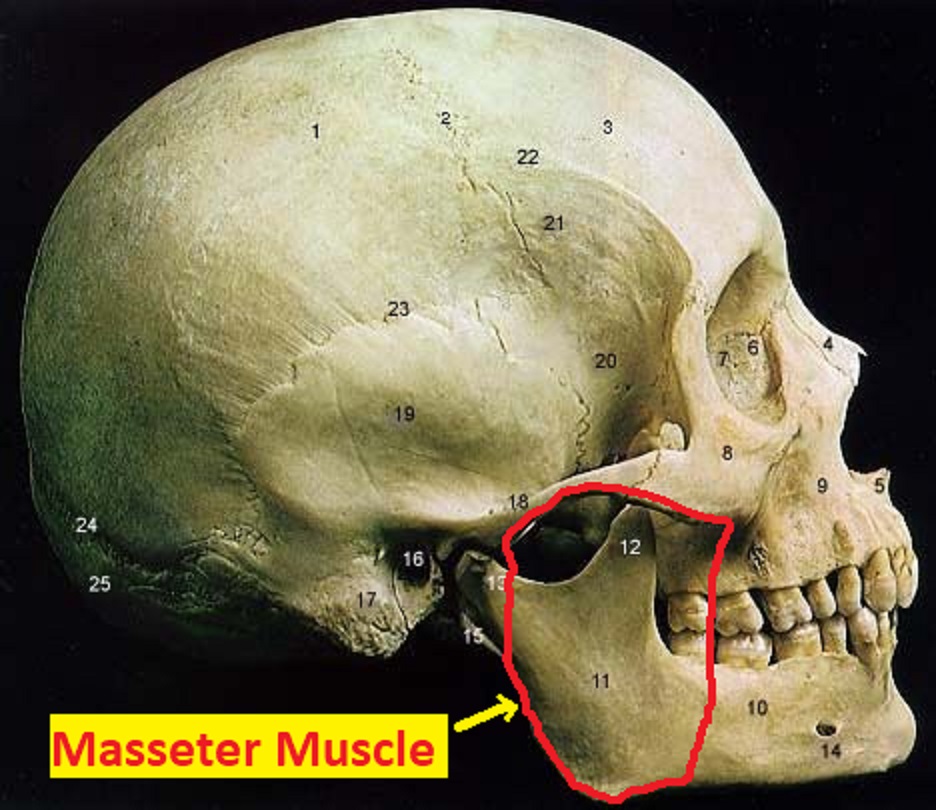
In the following picture you can see the side of a skull with the outline of the masseter muscle marked on it. The masseter muscle is a muscle at the back of the side of the jaw, external to the jaw. See how the masseter muscle goes forward beyond the upright part of the jaw and there is no bone between it and the wisdom teeth:

In the next two pictures you can see a replica of a human skull with (vegan) model clay showing some structures neighboring the wisdom teeth:


When looking in the inside of the cheek, you can see the bulge created by the masseter muscle (the red in the skull model pictures) and the buccal fat pad (the yellow in them). In the next picture, inside the cheek, you can clearly see this bulge. Note that the wisdom tooth was removed in this mouth:

In this second picture you can see more clearly, I think, how, had the wisdom tooth been where now there is an empty socket, it would have displaced sligthly the bulge. Note that this second picture was made shortly after the wisdom tooth in it was removed, and so has some blood in it:

Now look here to see what would happen to all three structures the wisdom tooth presses on (the masseter muscle, the buccal fat pad and the buccinator muscle) when the lower jaw is moved to that side. Their bottoms would move with the lower jaw but their tops would remaing stationary, attached to the rest of the skull, which wouldn't move. They would be diagonal, and so the wisdom tooth would press a little more into them:

As you can see from all these pictures, the wisdom tooth pushes into this bulge in the cheek and the bulge blocks to some degree the motion of the lower jaw or more accurately I think it springs and cushions this motion to this side. This would mean that if a wisdom tooth was removed, the lower jaw would not feel the same resistance when moving to the side, and would move, and perhaps feel, differently, albeit in a subtle way.
Wisdom tooth removal is very common, and if removal of them causes mechanical harmful changes to the jaw, this is an issue of great importance. I am not a professional researcher, and want someone to collobrate on this work in the hope of publishing a paper on it. If you are interested or have any feedback, please write me an email: Asaf Cygelberg, 1wasasalted@gmail.com.